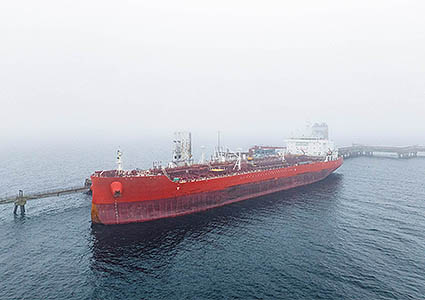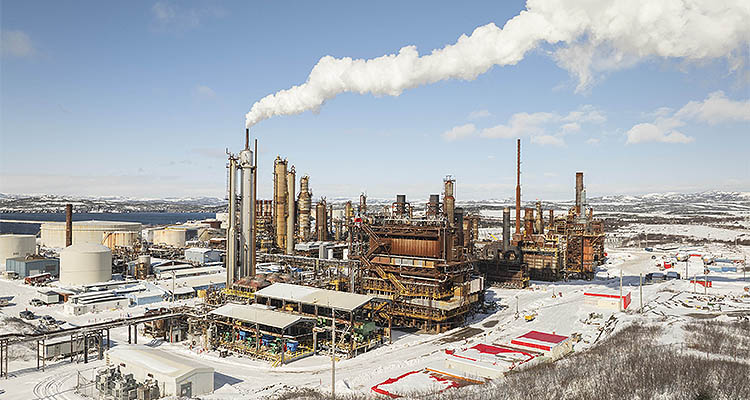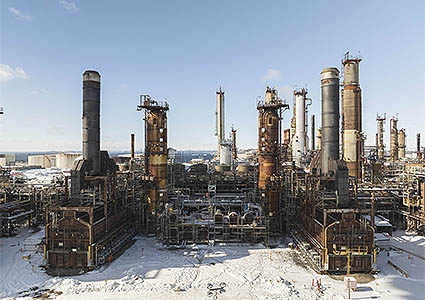Braya Renewable Fuels is a global leader in energy transition and renewable fuel production
Braya Renewable Fuels’ (Braya) refinery in Come By Chance, Newfoundland and Labrador, is a world-class converted renewable fuels production facility, currently producing up to 18,000 barrels per day (bpd) of renewable diesel. The refinery provides reliable renewable fuel that supports the energy transition by decarbonizing hard-to-abate sectors such as heavy-duty transport, aviation, and heavy industry. Using state-of-the-art, proven technology and drawing on the experience of the local community and expert leadership, Braya is poised to meet the growing global demand for renewable fuel.
Todd O’Malley joined Braya as Chief Executive Officer in October 2023. Prior to that, he held C-suite positions and served as a special advisor to several private equity and public company CEOs and boards regarding corporate strategy, mergers, acquisitions and divestments, financial structuring, and commercial optimization. He has also worked extensively in the investment banking, hedge fund, commodity trading, and electric and natural gas sectors.
 Agile operations
Agile operations
“This has been a project, multiple years in the making,” Todd begins. “We took a preexisting petroleum refinery and put it through an extensive conversion process, reordering some of the flows inside the refinery to ultimately be able to handle renewable feedstocks like soybean and distillers corn oil, animal and other waste fats. The feedstock is subjected to pressure and temperature refining processes and converted into renewable diesel that can be dropped into the ultra-low-sulfur diesel pool.
“It is a fantastic outcome for the province, for Canada, and the world in general. Climate change is happening, and this gives us an alternative fuel to help decarbonize very difficult-to-abate heavy industries. We restarted the facility in February 2024, and it has been running well. We did this in the middle of winter, which is no mean feat for this part of the world and wouldn’t have been possible had it not been for our phenomenal local team. I am proud to say that we did it safely, and we did it environmentally responsibly,” he enthuses.
The refinery’s strategic location enables it to source low-carbon feedstocks from suppliers across the globe while delivering sustainable fuels to low-carbon markets in North America and Europe. All feedstocks are received and transported by ships via the deep-water dock, and tankage has been repurposed to house feedstock and products.
“The plant’s geographic location,” Todd continues, “is in a unique corner of maritime Atlantic trade routes. This means we can effectively source our feedstock from anywhere in the world, and subsequently, supply our product to anywhere in the world. Another key differentiator for us is that being Canadian, we’re not bound by The Jones Act. This is a 1920 US federal law that limits how cargo is transported by sea. It requires any cargo shipped between US ports to be carried by US ships, with American crews. For example, plants along the US Gulf Coast must book a Jones Act vessel to go through the Panama Canal and supply product to California, whereas we can book an international vessel to complete that same route. Additionally, we’re feedstock agnostic, and intentionally so, so that we can operate in the market and purchase the most economic low-carbon feedstock available at any given time.”
Positive partnerships
Alongside its current production capacity of 18,000 bpd of renewable diesel, the company has plans to expand production capacity, as well as add sustainable aviation fuel (SAF) production capabilities and explore green hydrogen production. The on-site production of renewable diesel, SAF, and green hydrogen offers proven alternatives to fossil fuels and significantly decreases the carbon emissions linked to hard-to-abate sectors.
“We are working on projects that are exploring the potential to produce SAF, but as we stand today, that market is underdeveloped in terms of the actual percentages of SAF currently being consumed. Airlines are trying to grapple with how they pass the cost of SAF onto customers, because it is a premium fuel, or at least in theory, it should be from a pricing perspective. As such, pricing awareness in the market isn’t what it should be. We know what we think it’s worth, and for us to make the necessary incremental investment to build out the capability to produce it, others need to also appreciate its value. When we do move forward, it could account for somewhere between 30 and 40 percent of our total production. 
“In terms of green hydrogen, we have a publicly announced partnership with ABO Wind for the joint development of green hydrogen production at our refinery. The Crown Lands decision has awarded ABO Wind exclusive rights to 267,000 acres near the refinery. Securing the land for our joint project is a significant milestone toward realizing Braya’s vision to become a world leader in renewable fuels production. We look forward to working with ABO Wind to add green hydrogen to our portfolio. It is a high CapEx project that will bring a lot of incremental jobs to the province and again has the ancillary benefit of providing us with the green hydrogen we need to produce both renewable diesel and SAF. While we currently produce our own hydrogen, green hydrogen generated from wind would effectively be a replacement for that,” Todd elaborates.
In establishing Braya as the world’s premier renewable fuels producer, the company considers its team to be its greatest asset. Proud to provide safe and sustainable jobs that contribute to the clean energy transition, Todd shares details of the project’s impact on the local community. “During the project’s construction and commissioning phases, we were employing roughly 800 people on site. Even today, we have approximately 240 full-time employees working at the site, alongside third-party contractors. When the refinery was shut down by its previous owner, everyone was laid off and those people lost the ability to support their families. It has been phenomenal to reintroduce those high paying jobs, and the stability of long-term employment. There are at least a couple of families where we have three, if not four generations, working at the refinery at the same time.”
Strategic markets
Braya’s largest market is currently California in the US. “This region,” Todd continues, “established a low carbon fuel standard very early relative to pretty much anywhere else other than maybe some central European countries. As such, that’s probably where the product is going to wind up for the foreseeable future. While we are seeing a continual development of end user markets both in Canada as well as in the Northeastern United States, and we do have the capability to sell directly into Europe, right now, that is not the best market for us. That said, we constantly monitor those markets to ensure that we’re making the best decisions for our facility.”
Facility of the future
Looking to the future, Braya is set to continue exploring opportunities in SAF and green hydrogen production alongside increasing its bpd production of renewable diesel. “A few years down the line,” Todd asserts, “our world-class facility will be even more robust and more diversified. It will stand as a shining example of, and maybe even the blueprint for, what a renewable energy complex should look like. As the world continues to adopt more green fuels into the pool, we are well placed to be on the leading edge of that movement. We have been incredibly fortunate,” he concludes, “to have great partners at the local, provincial and federal government levels, and we value and appreciate those relationships. This facility is an economic driver for the region, and we’ve worked collaboratively to reach our current milestones and will continue to do so moving forward.”

